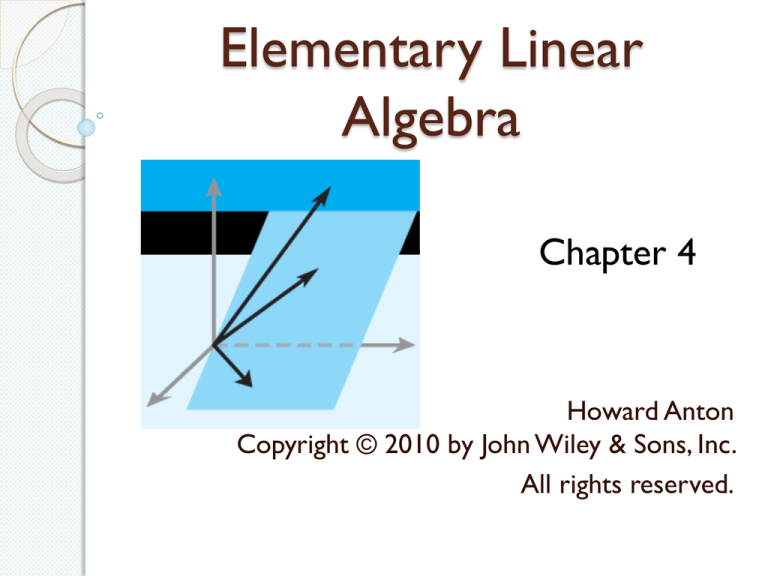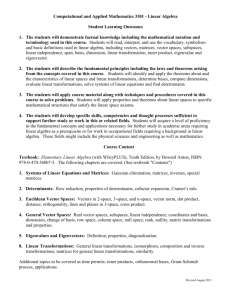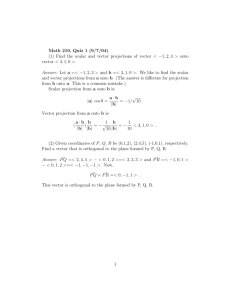
Elementary Linear
Algebra
Chapter 4
Howard Anton
Copyright © 2010 by John Wiley & Sons, Inc.
All rights reserved.
Chapter 4
General Vector Spaces
4.1 Real Vector Spaces
4.2 Subspaces
4.3 Linear Independence
4.4 Coordinates and Basis
4.5 Dimension
4.6 Change of Basis
4.7 Row Space, Column Space, and Null Space
4.8 Rank, Nullity, and the Fundamental Matrix Spaces
4.9 Matrix Transformations from Rn to Rm
4.10 Properties of Matrix Transformations
4.11 Geometry of Matrix Operators on R2
4.12 Dynamical Systems and Markov Chains
Section 4.1 Vector Space Axioms
To Show that a Set with Two
Operations is a Vector Space
1. Identify the set V of objects that will become
vectors.
2. Identify the addition and scalar multiplication
operations on V.
3. Verify Axioms 1(closure under addition) and 6
(closure under scalar multiplication) ; that
is, adding two vectors in V produces a vector
in V, and multiplying a vector in V by a scalar
also produces a vector in V.
4. Confirm that Axioms 2,3,4,5,7,8,9 and 10 hold.
Section 4.2
Subspaces
The ‘smallest’ subspace
of a vector space V
The span of S
Section 4.3 Linear Independence
Linearly independence
Linear Independence in R2 and R3
The Wronskian
Section 4.4 Coordinates and Basis
The coordinate vector
Section 4.5 Dimension
Plus / Minus Theorem
Section 4.6 Change of Basis
Transition Matrices
Computing the transition matrix
Section 4.7 Row Space,
Column Space, and Null Space
Row, column and null spaces
Systems of linear equations
A basis for span (S)
Section 4.8 Rank, Nullity, and the
Fundamental Matrix Spaces
Fundamental Spaces of Matrix A
Row
space of A
Null space of A
Column space of A
Null space of AT
Section 4.9 Matrix Transformations
from Rn to Rm
Finding the standard matrix for a
matrix transformation
Rotation Operators
Dilations and Contractions
Expansion or Compression
Shear
Section 4.10 Properties of Matrix
Transformations
Section 4.11 Geometry of Matrix
Operators on R2
Matrix Operators
Computer Graphics
Section 4.12 Dynamical Systems
and Markov Chains
Regular Markov Chains




